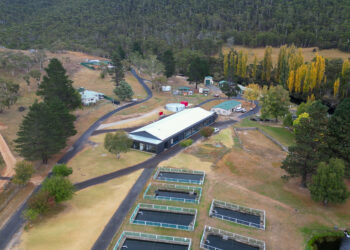
FISHO’S own Dr Ben Diggles has warned that seagrass beds off Queensland’s Bribie Island are being smothered by ‘snotweed’ algae.
But, in an article on the ABC website, Dr Diggles says that a national effort to restore Australia’s lost shellfish reefs could help turn the tide against the slimy invader while improving water quality, creating new marine habitat and significantly boosting fish stocks.
Dr Diggles, along with Healthy Land and Water and Unity Water, as well as local indigenous, government and community organisations have formed a supergroup behind an ambitious shellfish reef restoration trial called Restore Pumicestone Passage.
Since December 2017, they have been returning cleaned and quarantined recycled oyster shells to the water as habitat, in trials to re-establish the lost reefs of the passage.
Robbie Porter volunteers with OzFish, a not-for-profit organisation of amateur fishers who are taking action to improve, restore and protect fish habitat.
So far, 16 experimental reefs have been created in Pumicestone Passage, using recycled oyster shells seeded with a variety of young shellfish, including baby oysters, called spat.
An interim report by the University of the Sunshine Coast found that in the year to June on the best of the reef restoration sites, fish species richness had increased by up to 82 per cent and the total fish abundance was 268 per cent higher, compared to control sites.
You can read the full article HERE.
















